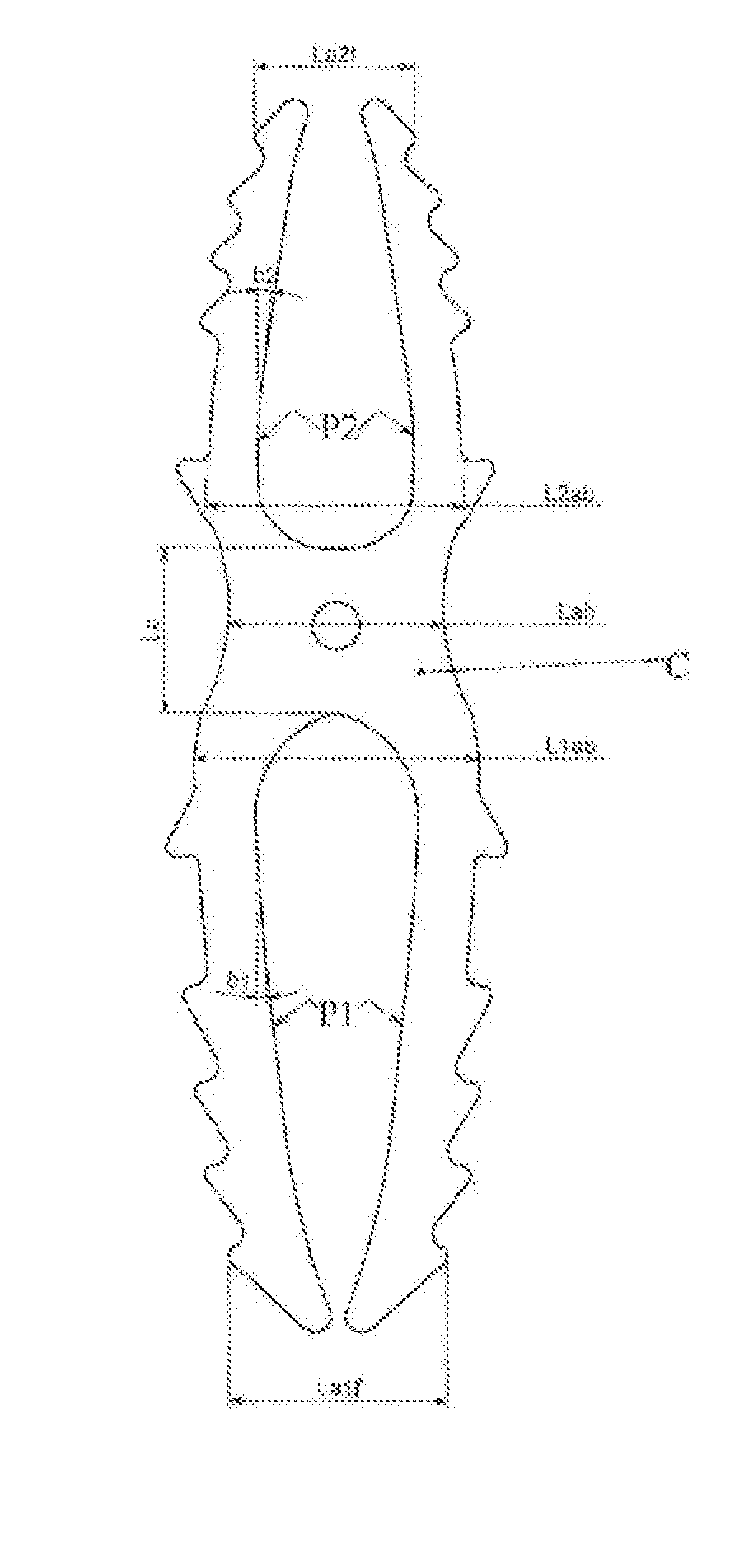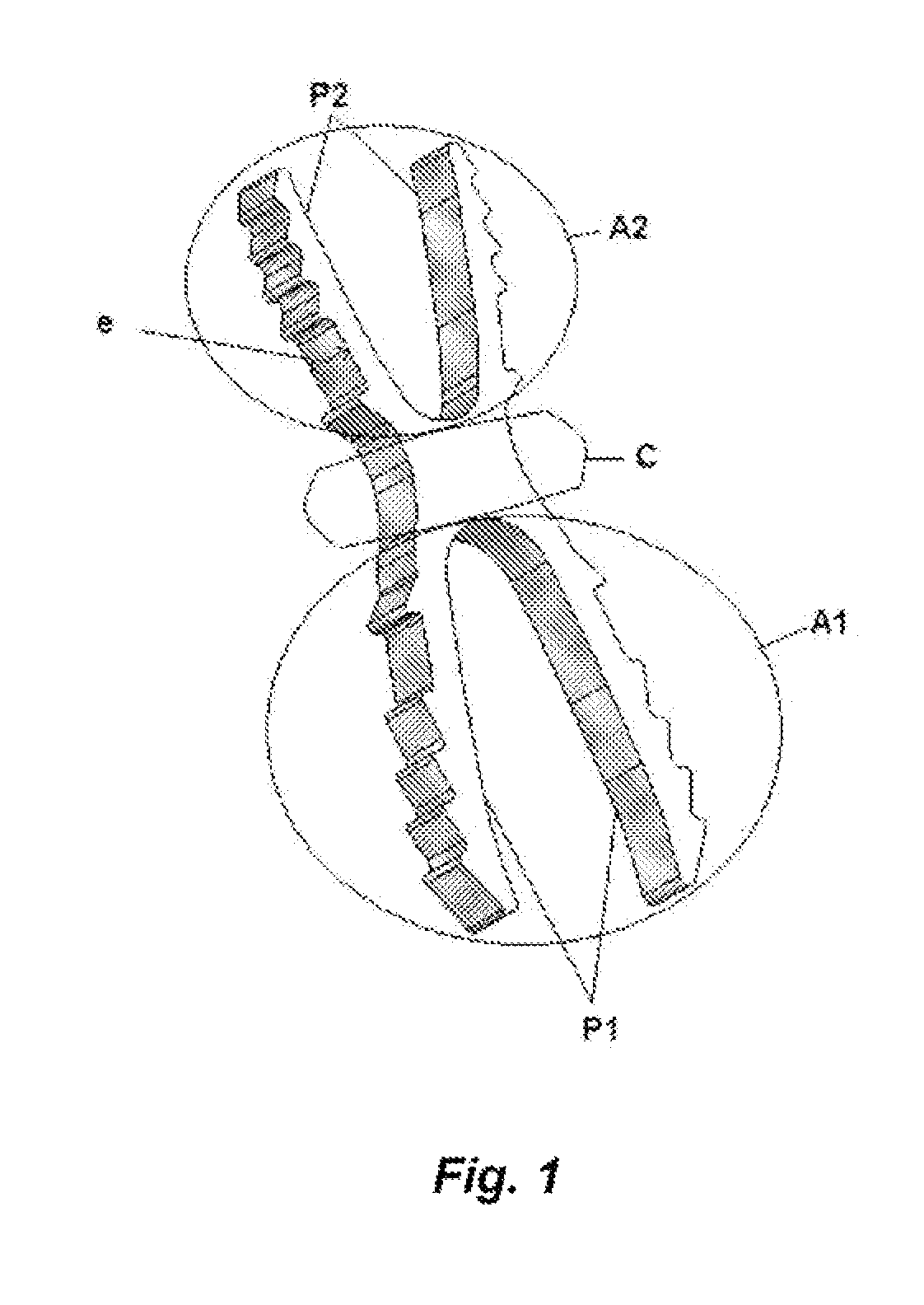Osteosynthesis device
a technology of osteosynthesis and phalanges, which is applied in the direction of prosthesis, ligaments, surgical staples, etc., can solve the problems of limiting applications, increasing the size of the phalanges, and requiring a relatively large spa
- Summary
- Abstract
- Description
- Claims
- Application Information
AI Technical Summary
Benefits of technology
Problems solved by technology
Method used
Image
Examples
Embodiment Construction
[0073]In a particular embodiment, intended for a distal interphalangeal arthrodesis (hand), the implant is prepared from a superelastic Nitinol alloy (nickel-titanium in the weight proportion 55.8% nickel and 44.2% titanium).
[0074]The cross-section of the central zone C is Lab×e=2.8×1.2 mm and the legs are asymmetrical to adapt better to the shapes of the bone, minimize the implanted metal section and allow sufficient expansion for good anchorage. The length of the legs is L2=6.5 mm distal side P2 and L1=9 mm proximal side P1. The length of the central zone C is 3 mm, allowing a slight offset during closure, without affecting the shear strength. To adapt to the surgeon's choice, this central zone may be bent (typically flat or 15° or 25°).
[0075]In the closed position, the width of the proximal base L1ab is 3.8 mm and of the distal base L2ab is 3.0 mm. The opening of the legs P1 and P2 is 2.5 mm or 2.2 mm, that is La1 is 6.3 mm and La2 is 5.2 mm. In the open position the angle at the...
PUM
 Login to View More
Login to View More Abstract
Description
Claims
Application Information
 Login to View More
Login to View More - R&D
- Intellectual Property
- Life Sciences
- Materials
- Tech Scout
- Unparalleled Data Quality
- Higher Quality Content
- 60% Fewer Hallucinations
Browse by: Latest US Patents, China's latest patents, Technical Efficacy Thesaurus, Application Domain, Technology Topic, Popular Technical Reports.
© 2025 PatSnap. All rights reserved.Legal|Privacy policy|Modern Slavery Act Transparency Statement|Sitemap|About US| Contact US: help@patsnap.com



